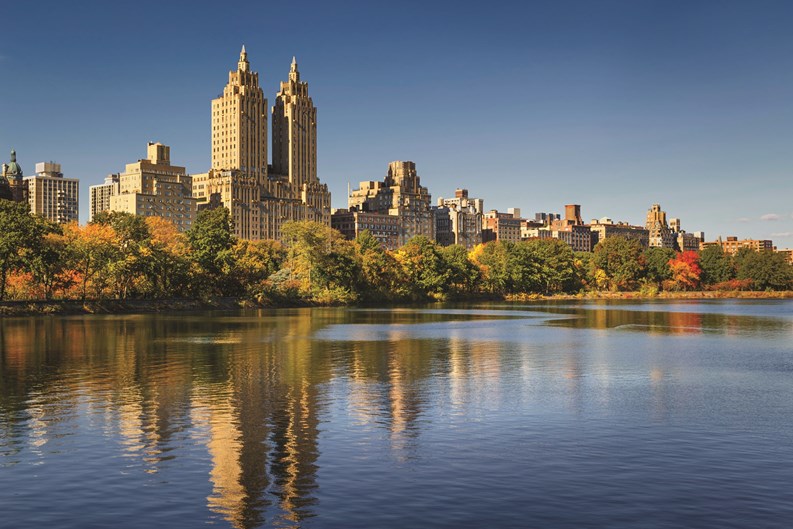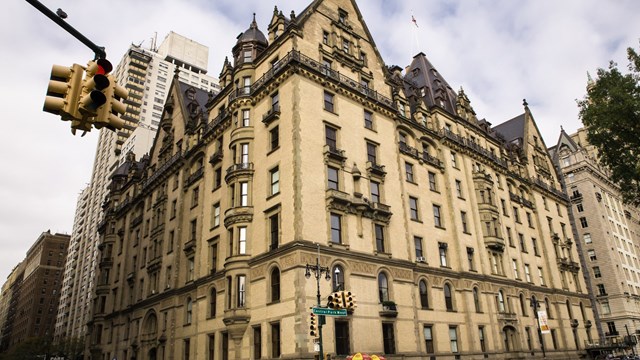With its plethora of major cultural and educational institutions like Lincoln Center, the American Museum of Natural History, the Cathedral of Saint John the Divine, General Grant National Memorial (a.k.a. Grant’s Tomb), Barnard College, Union Theological Seminary and Columbia University, it’s easy to forget that the Upper West Side of Manhattan is primarily a residential neighborhood. Block after block you’ll find stately prewar architecture, opulent coops and condos and classic four and five story residences sandwiched between lavish parks, luxury hotels, sophisticated boutiques and haute cuisine restaurants.
Beloved television characters from Seinfeld, Will & Grace and 30 Rock as well as twisted ballerina Nina (Natalie Portman) from the Oscar winning film Black Swan and yuppie serial killer Patrick Bateman (Christian Bale) from the 2000 thriller American Psycho all had Upper West Side addresses. It’s also home to the renowned Dakota, the apartment building where musician John Lennon was murdered and provided the setting for the 1968 film Rosemary’s Baby.
The historic neighborhood is bordered by Central Park to the east, the Hudson River to the West and 59th Street on the south. Its’ northern boundary is slightly more ambiguous. Historically it has been cited as 110th Street but oftentimes it is considered 125th Street by real estate agents to use the tony neighborhood when listing properties that includes Morningside Heights. Boundary disputes aside, within this area you’ll find some of Manhattan’s priciest and most desirable real estate.
The Upper West Side, is similar to most New York City neighborhoods in the way that it has undergone drastic changes.
History
In the early and mid-seventeenth century, the Upper West Side was settled by Dutch immigrants. The Dutch dubbed the area from about 23rd Street to Hollow Way (currently 125th Street) Bloemendaal, though it was later changed to the anglicized Bloomingdale or Bloomingdale District.
By the beginning of the eighteenth century Bloomingdale was a large producer of tobacco. The area was mainly comprised of farms, wilderness and rolling country side.
In 1703, Bloomingdale Road, which would later go on to become Broadway was erected to handle the increasingly heavy traffic due to the area’s burgeoning commerce. The road stretched from 23rd street to 114th Street. By the late eighteenth century the Upper West Side was filled with grandiose homes of some of Manhattan’s wealthiest merchants. Many of these colonial mansions were scattered along Bloomingdale Road. During this time most of the Upper West Side river front was a shipping, transportation and manufacturing corridor. At the same time the area became increasingly infilled with smaller villas, by the middle of the century certain parts had become lower class.
When construction of Central Park began in 1853 many of the park’s homeless population and lower income residents were forced to flee the area. Shortly after, parts of the neighborhood became a ragtag collection of squatters housing, boarding houses and rowdy taverns.
During the creation of the park development of the neighborhood inched along, and by the time the 843 acre park was completed 20-years later, it was completely hindered by the panic of 1873 (an international six-year economic depression triggered by the fall in demand for silver.)
A Neighborhood on the Rise
By the late 1880s’ High rises shot up along the park and real estate developers invested in grand projects such as the Dakota and later the San Remo.
In the 1890s’ Columbia University moved from the East Side of Manhattan to Morningside Heights, taking over the grounds of the Bloomingdale Insane Asylum. The school’s presence contributed to the trend of a rising intellectual and artistic population on the Upper West Side.
The building boom continued roughly from 1885 to 1910, spurned on in part by the 1904 opening of the city’s first subway line, the IRT Broadway – Seventh Avenue Line, subway stations were located at 59th, 66th, 72nd, 79th, 86th, 91st, 96th, 103rd, 110th and 116th (Now 125th) streets.
Each avenue began to take on its own recognizable feature: Columbus offered commerce, on Amsterdam you could find affordable housing and mom-and-pop shops, Riverside (opened in 1880) a slightly seedy, park fronted way and West End, a quiet residential enclave.
Changes
During the Roaring Twenties, many of Manhattan’s well-to-do denizens could be found on Riverside and West End but nearby Broadway and its surrounding areas were noticeably seedier, filled with low-income families living in neglected, old buildings.
Development and construction ceased in the 30s’ and the Upper West Side’s popularity nosedived.
In 1940 the predominantly African -American neighborhood of dilapidated tenements called San Juan Hill (now Lincoln Center area) was characterized by the New York City Housing Authority as “the worst slum section in the City of New York.” Plans were made to demolish the tenements and build the Amsterdam Housing Projects and Lincoln Center in its place.
Upper West Side Today
Tourists, neighborhood locals, well-heeled shoppers, college students and native New Yorkers flock to the bustling neighborhood on a daily basis to experience groundbreaking opera, dance and theater productions, museum exhibitions, brunch spots, upscale clothing stores and Central Park, which continues to be reprieve in the middle of a hustling and bustling city.
The Upper West Side is also home to New York City’s only Forbes Five-Star hotel and the uber popular tourist destination, the Time Warner Center where you’ll find numerous upscale shops and a 68,000-square-foot Whole Foods Market.
Christy Smith-Sloman is a Manhattan-based freelance writer.






Leave a Comment